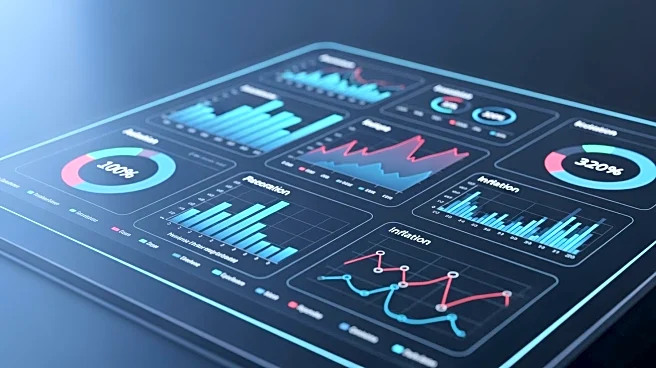What's Happening?
The U.S. Bureau of Labor Statistics has reported that the inflation rate in the United States is currently at 2.92% as of September 2025. This rate reflects the overall increase in prices of goods and
services, reducing the purchasing power of the dollar. Inflation is typically measured by the Consumer Price Index (CPI), which tracks the price changes of a 'basket of goods and services' over time. The inflation rate is the percentage change in the CPI, indicating how quickly prices are rising. Historical data shows that inflation has averaged 0.94% per year since 1635, leading to a cumulative price change of 3,803.33%. The CPI in 2025 is recorded at 323.976, compared to 8.3 in 1635.
Why It's Important?
Understanding inflation is crucial for economic planning and policy-making. A stable inflation rate helps maintain the value of money, making it easier for consumers and businesses to plan their finances. High inflation can erode purchasing power, leading to increased costs for consumers and potentially slowing economic growth. Conversely, low inflation can encourage spending and investment, contributing to economic stability. The current inflation rate of 2.92% suggests a moderate increase in prices, which can impact various sectors differently, such as housing, medical care, and food, which have seen varying inflation rates over the years.
What's Next?
The inflation rate is subject to change based on economic conditions, including supply chain dynamics, consumer demand, and monetary policy decisions. The Bureau of Labor Statistics will continue to monitor and report on inflation trends, providing insights into how these changes affect the economy. Policymakers may adjust interest rates or implement fiscal measures to manage inflation and ensure economic stability. Businesses and consumers will need to adapt to these changes, potentially altering spending and investment strategies.
Beyond the Headlines
Inflation has broader implications beyond immediate price changes. It affects long-term economic planning, investment strategies, and social welfare programs. Persistent inflation can lead to increased interest rates, affecting borrowing costs for individuals and businesses. It also influences wage negotiations and can impact income distribution, potentially leading to social and economic disparities. Understanding these dynamics is essential for developing effective economic policies and ensuring equitable growth.












